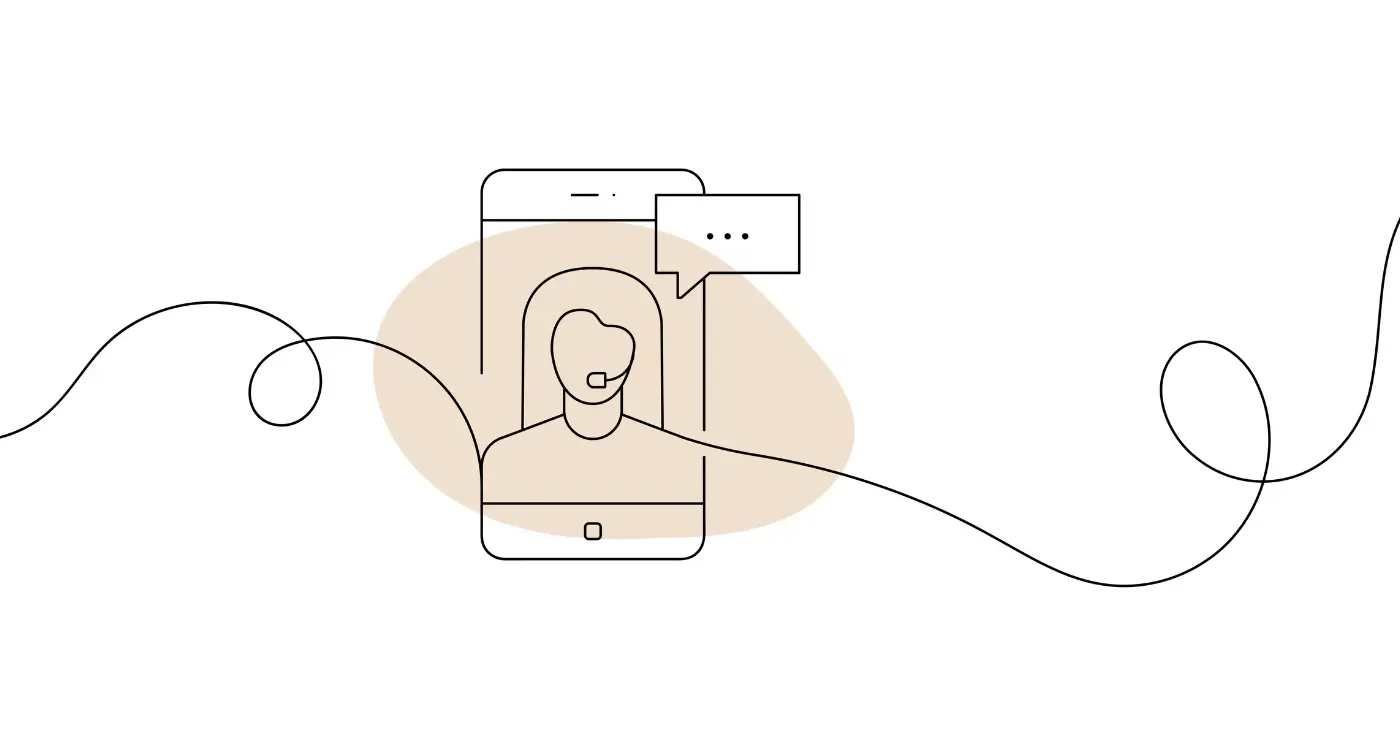Why Are My App Users Leaving Bad Reviews Instead Of Contacting Support?
Bad news! Your mobile app has been live for months, you've poured your heart and soul into creating something genuinely useful, but the app store reviews are brutal. One star after one star, with users complaining about bugs, missing features, and poor performance. Meanwhile, your customer support inbox sits nearly empty. Sound familiar? This frustrating scenario plays out for thousands of app developers every day—users would rather leave a scathing public review than reach out for help privately.
The numbers don't lie either. Studies show that only 4% of dissatisfied customers actually contact support, whilst a staggering 91% simply walk away without saying a word. But here's the kicker—many of those silent departures turn into public reviews that can damage your app's reputation for years to come. It's like having someone complain loudly about your restaurant to everyone on the street instead of quietly mentioning the cold soup to your waiter.
When users can't find quick solutions through support, they turn reviews into their personal complaint department
After working with countless app developers facing this exact problem, I've learned that the issue isn't just about having bad customer support—it's about understanding why users choose public reviews over private conversations. The psychology behind this behaviour reveals some uncomfortable truths about how we design our apps and support systems.
Why Users Skip Your Support Channel
After building mobile apps for more years than I care to admit, I've noticed something that happens time and time again. Users will leave a scathing one-star review about a bug that could have been fixed with a simple email to support. It's maddening! But here's the thing—users aren't being deliberately difficult. They're skipping your support channel for very real reasons.
The biggest culprit? Your support system is too hard to find. I can't tell you how many apps I've tested where the contact option is buried three menus deep or hidden in a settings page that nobody ever visits. Users expect to find help within two taps maximum. If they can't, they'll head straight to the app store instead.
The Main Reasons Users Avoid Support
- Support contact details are buried in settings or hard to locate
- Previous bad experiences with slow or unhelpful responses
- Forms that ask for too much information upfront
- No clear indication of response times
- Fear that their issue won't be taken seriously
- Preference for public forums where others can see solutions
Speed matters too. Users live in an instant world where they expect immediate responses. If your support page doesn't tell them when they'll hear back, they assume it'll take forever. That's when they turn to public reviews—because at least then they feel heard straight away.
The Psychology Behind Public Reviews
People don't leave reviews to be mean—they leave them because they're frustrated and they want to be heard. When someone downloads your mobile app and runs into problems, their first instinct isn't always to find your customer support team. Instead, they head straight to the app store where they know their voice will be seen by thousands of other potential users.
There's real psychology at work here. Public reviews give users a sense of power and control that private support channels simply can't match. When someone leaves a one-star review, they're not just complaining—they're warning others and potentially influencing your app's success. That feeling of impact is incredibly satisfying for frustrated users.
What Drives Users to Review Publicly
The main psychological drivers behind public reviews include:
- Wanting to prevent others from having the same bad experience
- Feeling like their voice matters more when it's public
- Getting immediate emotional release from venting frustration
- Believing public pressure will force faster fixes
- Seeking validation from other users who've had similar issues
Most users who leave negative reviews actually want your app to succeed—they're just expressing frustration in the most visible way possible. Understanding this can help you respond more empathetically.
The truth is, reviews feel permanent and impactful in ways that support tickets don't. Users know that their public feedback will influence download decisions for months or even years to come, giving them a sense of agency that private customer support conversations lack.
Common App Issues That Drive Bad Reviews
After years of building mobile apps, I've noticed certain problems pop up again and again in negative reviews. These aren't random complaints—they're predictable patterns that stem from the same handful of technical and design issues.
Performance Problems That Frustrate Users
Slow loading times top the list of review killers. When your app takes more than three seconds to load, users start getting impatient; when it hits five seconds, they're already thinking about uninstalling. Crashes are even worse—nothing sends someone straight to the app store reviews faster than losing their progress because the app suddenly quit.
Battery drain is another silent review killer. Users might not notice it immediately, but when they realise your app is eating through their phone's power, that one-star review is coming your way.
User Experience Issues
Confusing navigation drives users mad. If they can't find what they're looking for within a few taps, they'll blame the app, not themselves. Poor search functionality falls into this category too—when users type something and get irrelevant results, they feel like the app isn't working properly.
Login problems are particularly frustrating because they block users from accessing content they might have paid for. Password reset systems that don't work or take too long will earn you angry reviews fast.
How Poor Support Experiences Create Angry Reviewers
Nothing turns a frustrated user into an angry reviewer quite like a terrible support experience. I've watched countless mobile app developers make this mistake—they think once someone contacts support, the hard work is done. Wrong! That's actually when the real challenge begins.
When users finally decide to reach out for help, they're already annoyed. Maybe your app crashed during an important task, or a feature isn't working as expected. They've probably tried fixing it themselves first. By the time they contact your support team, their patience is already running thin.
The Breaking Point
What pushes them over the edge? Slow response times, copy-paste replies that don't address their actual problem, or—worst of all—being passed between different support agents who make them explain everything again. Each poor interaction adds fuel to the fire.
The difference between a resolved complaint and a one-star review often comes down to how quickly and personally we respond to user problems
When Support Fails
When your support system fails users, they don't just delete your app quietly. They head straight to the app store with their pitchforks out. That one-star review isn't just about the original bug—it's about feeling ignored, dismissed, or treated like they don't matter. Poor support experiences don't just lose you one customer; they actively create your harshest critics.
Making Your Support System More Accessible
I've watched countless apps fail because users couldn't find help when they needed it most. The support button is buried three menus deep, or worse—it opens an email client that half your users don't even have set up properly. When people can't reach you easily, they'll find another way to vent their frustration.
Put Support Where Users Expect It
Your support system should be visible from every screen in your app. Not obvious to the point of being annoying, but accessible when someone's looking for it. A simple "Help" or "Support" option in your main menu works wonders; so does a floating help button on key screens where users typically run into trouble.
Think about when people actually need help—they're usually stuck, confused, or something's gone wrong. They don't want to hunt through settings or scroll through lengthy FAQ pages. They want immediate access to real assistance.
Offer Multiple Ways to Get Help
Some users prefer live chat, others want to send an email, and many just need a quick answer from your FAQ. Offering all three options means you're meeting people where they are, not forcing them to communicate in a way that doesn't suit them. When support feels effortless, users choose it over public complaints every time.
Turning Bad Reviews Into Support Opportunities
When I see developers panicking about negative reviews, I always tell them the same thing—each bad review is actually a golden ticket. Yes, you read that right. That one-star review complaining about crashes or confusing navigation? That's not just criticism; that's free user research delivered straight to your doorstep.
The beauty of public reviews is that they show you exactly what's frustrating your users. And here's the kicker—when you respond professionally and helpfully to these reviews, other potential users see that too. They're watching how you handle problems, not just whether problems exist.
The Art of the Public Response
Your response to bad reviews should never be defensive. Thank the user for their feedback, acknowledge their frustration, and offer a solution. Even better, invite them to contact your support team directly. This shows everyone reading that you care about fixing issues, not just collecting downloads.
I've watched apps completely turn around their reputation simply by being responsive and helpful in their review responses. Users start updating their reviews from one star to four or five stars when they see real action being taken.
Always respond to negative reviews within 24 hours—it shows you're actively monitoring and care about user experience.
Bad reviews aren't the enemy; ignoring them is. Use them as your roadmap to building better mobile app experiences and stronger customer support relationships.
Building a Proactive Support Strategy
The best support strategy isn't about fixing problems after they happen—it's about stopping them before they start. I've worked with dozens of app teams over the years, and the ones with the fewest bad reviews are always the ones thinking three steps ahead.
Being proactive means spotting patterns in user behaviour and addressing them before they become full-blown complaints. When you notice users repeatedly getting stuck on the same screen, that's not a user problem—that's a design problem. Fix the screen, not just the individual support tickets.
Key Proactive Support Tactics
- Monitor user analytics to identify drop-off points and friction areas
- Send helpful tips and tutorials based on user behaviour patterns
- Create in-app guidance that appears when users seem confused
- Reach out to users who haven't engaged recently with helpful content
- Update your app regularly based on common support questions
- Build a comprehensive FAQ that addresses real user problems
The goal is simple: solve problems before users even know they have them. When someone downloads your app and everything just works smoothly, they're far more likely to leave a positive review—or better yet, recommend your app to their friends.
Making Support Feel Personal
Proactive support isn't just about technology; it's about timing and tone. A well-timed, helpful message can turn a frustrated user into a loyal advocate. The key is making it feel genuinely helpful, not pushy or automated.
Conclusion
After working with mobile app clients for over eight years, I can tell you that the relationship between bad reviews and customer support isn't going away anytime soon. Users will always find it easier to leave a quick review than hunt down your support contact—that's just human nature.
But here's what I've learned: the apps that succeed aren't the ones that never get bad reviews. They're the ones that make it so easy to get help that users actually want to reach out before they get frustrated. When your support system is visible, accessible, and genuinely helpful, you'll see those angry reviews start to turn into support tickets instead.
The mobile app market is more competitive than ever, and your review score can make or break your success. Every bad review that could have been a support conversation is a missed opportunity—not just to solve one person's problem, but to improve your app for everyone else too.
Making your support system work properly takes effort, but it's worth it. Your users want to love your app; they just need you to make it easy for them to get the help they need when things go wrong.
Share this
Subscribe To Our Learning Centre
You May Also Like
These Related Guides

How Much Does It Cost to Set up Customer Support for a Mobile App?

How Do I Handle Customer Complaints When My App Crashes?



